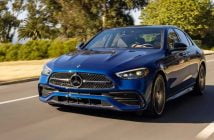+++ Honda and Nissan reported their strongest monthly vehicles sales growth for CHINA this year in September, thanks to a tax cut on small engine vehicles and comparatively weak growth for the same month last year. Competitor Ford posted its strongest growth since January, while Toyota sales increased the fastest since March. The Chinese auto market, the world’s largest, has rebounded strongly since October last year when the central government cut sales tax on vehicles with engines of 1.6 liters or smaller in response to slower sales in the weakening economy. That tax cut will continue to drive strong growth as consumers rush to buy cars before its planned expiry at the end of the year, according to analysts and industry officials. “This will be a pretty big stimulus for Q4”, said Yale Zhang, managing director of consultancy Automotive Foresight. The China Association of Automobile Manufacturers (CAAM) will report sales growth for the market overall on Wednesday, with Zhang predicting top-line growth of 25-30 percent.Honda posted the quickest growth among automakers reporting early, with a 46.5 percent year-on-year increase for the month. “The primary reason is new models plus added on top of that SUVs are very popular”, said Zhu Linjie, a Beijing-based spokesman for Honda. Sales of its recently launched Civic sedan and Elysion multi-purpose vehicle more than quadrupled, with sales of XR-V and Vezel/HR-V sport-utility vehicles (SUVs) growing at double-digit rates. Ford similarly reported strong SUV sales, as wealthier Chinese, often restricted by the government to buying one vehicle in many major cities, continue to upgrade to larger cars. China’s auto sales have outstripped expectations this year, with CAAM reporting last month that sales grew 11.4 percent for January to August, compared to its projection in January of 6 percent annual growth for 2016. +++
+++ The Chinese car market continues to grow for GENERAL MOTORS and its local joint ventures, with confirmation of record deliveries for the automaker through the month of September. Last month, GM’s Cadillac, Buick and Chevrolet brands as well as its local joint ventures Baojun and Wuling, delivered a record 343,773 vehicles across the nation, 16 percent more than the same month in 2015. Cadillac enjoyed the biggest growth of all, shifting 12,539 units, a massive 63 percent increase year over year. It was also the third consecutive month that Cadillac posted a sales increase in excess of 50 percent in China. In the Buick camp, deliveries soared by 23 percent to 108,325 units, a figure helped largely by the strong selling Excelle GT. The Envision SUV is also proving popular in China and in September, deliveries increased by 70 percent to 18,518 units. For Chevrolet, it sold 51,932 vehicles, a respectable number but just a 2.6 percent gain over last year. Following next month’s local introduction of the Equinox, sales can be expected to increase further. As for GM’s local ventures, Baojun and Wuling delivered 62,719 and 108,225 vehicles respectively. +++
+++ Don’t say you weren’t warned. Back in May 2015, MERCEDES and Qualcomm announced that they would be working together on electric vehicles with wireless charging. Today, the fruit of that partnership can be seen in the upcoming facelifted S 500e plug-in hybrid, which will offer Qualcomm’s wireless electric vehicle charging (WEVC) technology. This will be the first “plug-in vehicle” that will come with a wireless charging option from the automaker (aftermarket options for the most popular EVs have been available for a few years now). Qualcomm’s Halo WEVC comes from the the world of Formula E, where it has been highlighted in the BMW i8 safety car. Since Qualcomm doesn’t actually build its own parts to sell to automakers, the 3.6-kW system in the S 500e will be made by a Tier 1 power electronics supplier under license from Qualcomm. A wireless S 500e will be able to simply park over a pad on the ground to start charging, which will happen at about 90 percent efficiency. More importantly, in the press release announcing the WEVC S 500e, Qualcomm and Mercedes say that this wireless option is, “an important step in making self-driving cars truly autonomous”. There’s an important reason for this, because, “you cannot call a car ‘autonomous’ if it cannot fuel/recharge itself”. The race is on. +++
+++ RENAULT is poised to raise its bet on Russia, voting with other shareholders in troubled AvtoVAZ to launch an 85 billion ruble (1.2 billion euro) recapitalization in which the French carmaker may be the sole cash contributor. Renault will fund most or all of the rights issue put to shareholders – 30 percent of the overall capital hike – as it increases its stake in the Lada maker to more than 70 percent and consolidates its accounts as a subsidiary. AvtoVAZ will announce the results of a shareholder vote on the plan after a board meeting on Thursday, a company spokesman told Reuters. The announcement was originally expected on Monday. The spokesman gave no reason for the delay but said there were no problems. The bailout shores up Renault’s 8-year old investment in AvtoVAZ, in the hope of a big payoff when the Russian economy eventually recovers from a prolonged oil price slump compounded by international sanctions. AvtoVAZ has contributed positively to Renault profit in only 2 of those 8 years. Renault-Nissan CEO Carlos Ghosn acknowledged the setbacks in a recent newspaper interview, underlining upbeat group earnings achieved “in spite of the collapse of the Russian and Brazilian markets, where we’ve invested heavily”. Renault expects the Russian auto market, which has already halved from its 3 million peak in 2012, to be down another 12 percent this year and little changed in 2017, sales chief Thierry Koskas said at the Paris auto show on Sept. 29. Bo Andersson, installed by Ghosn as AvtoVAZ CEO in 2013, was replaced by Frenchman Nicolas Maure earlier this year after drawing fierce local criticism over cutbacks at the carmaker’s sprawling Togliatti plant and local suppliers. But the cuts and new models introduced on Andersson’s watch may help the carmaker to weather the storm. Lada sales were up 5 percent in September, according to data published on Monday, bucking the Russian market’s 11 percent decline. Now Renault is preparing to inject another 350 million euros in the December rights issue. Alliance partner Nissan and state-owned defense conglomerate Rostec – major AvtoVAZ shareholders until now – are not expected to take part, instead allowing their stakes to fall sharply. Barclays cut its target price on Renault shares by 4 percent after the proposed capital increase was unveiled last month. “While we continue to believe Russia offers long-term opportunities for the manufacturer, we cannot ignore the short-term burden”, analyst Alexis Albert said in a note. “This is an interesting long-term positioning in Russia but we also need to admit it has been quite costly”. The operation will cut Renault’s operating margin by half a percentage point and wipe 1.3 billion euros from its 2016 net cash position as it assumes AvtoVAZ debt, the bank predicts. Renault’s AvtoVAZ stake is expected to reach 72.5 percent, almost double today’s level, while Nissan’s falls to 5.5 percent from 12.5 and Rostec’s to 11 percent from 25, a source close to one of the shareholders said. The rights issue, also open to minority shareholders accounting for 25 percent of AvtoVAZ stock, is to be followed next year by a second stage to the recapitalization in which Rostec and Renault both swap AvtoVAZ debt for new shares. +++
+++ Bidders for Japan’s TAKATA Corp will meet this month with the carmakers key to its survival to consider options, including a $3 billion bid, at a gathering that could determine the future of the airbag maker, people familiar with the matter said. Takata is seeking a financial investor to help pay for huge liabilities from the world’s biggest auto recall, with defective airbag inflators linked to at least 15 deaths globally. The meetings of the 5 bidding groups and carmakers, who are Takata creditors and customers, will take place late this month in New York, four people involved or briefed on the matter told. The bid from Japanese inflator maker Daicel Corp and U.S. buyout firm Bain Capital, for more than 300 billion yen ($2.9 billion), is backed by Takata’s steering committee of Japan-based lawyers and consultants, said a person involved in the process and one who was briefed on the matter. That is the highest bid for Takata, the source briefed on the matter said. Automakers asked to meet directly with bidders, the sources said, as differences over whether to put Takata through bankruptcy complicate the discussions. Its $1.1 billion in capital is dwarfed by recall liabilities of some $10 billion, according to industry estimates, let alone potential legal liabilities. The tussle over bankruptcy is likely to delay by months earlier hopes to name a rescuer this month and complete Takata’s restructuring plans this year, sources told Reuters last month. Bidders include Sweden’s Autoliv, a global rival for Takata in airbags, as well as a partnership between U.S. parts supplier Key Safety Systems and private equity firm Carlyle Group, sources have said. All 5 bidders last month presented restructuring plans that would force the air-bag maker to file for bankruptcy protection, people with knowledge of the process have told Reuters. Takata’s share price, which has collapsed 89 percent since early 2014 as the recall crisis escalated, fell 7.5 percent on Tuesday on a report that the company is weighing bankruptcy in the United States, where most of the recalls, deaths and injuries linked to Takata’s defective airbags have occurred. Some automaker customers oppose bankruptcy because they would have to swallow significant losses after shouldering the bulk of recalls costs, sources have said. Automakers are leaning towards Autoliv, the world’s largest supplier of air bags, which has ramped up its production capacity of airbag inflators to provide replacements parts as Takata has struggled to keep up, said a source briefed on the matter. Toyota, Honda, Nissan and Volkswagen will attend the meetings, the sources said. Also attending will be the steering committee, which is overseeing Takata’s restructuring discussions, and investment bank Lazard, which is advising Takata on the bidding, they said. Daicel, Bain, Autoliv, KSS and Carlyle declined to comment on matters related to Takata. A spokeswoman for Takata and Lazard declined to comment. A spokesman for Honda declined to comment, while a Toyota spokesman reiterated the company’s position that it was not in a position to comment on Takata’s financial situation. Nissan and Volkswagen were not immediately available for comment. Bidders are trying to come up with a plan which will enable Takata to continue operating by drawing a line under its liabilities while also continuing to supply parts to the industry into the future. Automakers around the world have been recalling vehicles containing more than 100 million Takata inflators after it was discovered that a chemical compound in their propellant can explode violently, especially in vehicles with years of exposure to hot, humid weather. Increasing recalls and growing liabilities have increased financial pressures on the company which has been run by the founding Takada family since it was founded as a textile maker in 1933. The parts maker has booked an annual loss in 3 of the past 4 years and been shedding assets to raise funds. +++
+++ The TESLA Model Y is one of several new car models that could make their debut on 17 October, as company CEO Elon Musk has promised the arrival of a new product on Twitter. Musk’s announcement comes weeks after Tesla confirmed it was developing an expanded all-electric line-up that’ll include a Model Y, an electric cargo van, a minibus and a pick-up truck. While these cars would normally be top of the list of potential arrivals, Musk’s suggestion that the October debut will be ‘unexpected’ means it could also be something entirely different. Potential products include improved charging or road imaging technology. Some industry experts suspect next generation driverless technology won’t arrive for several more months, so have dismissed that as a likely candidate. More information will be released when the mystery product is launched on 17 October. Exactly when the Model Y and its new siblings arrive is yet to be learned, but Tesla founder Musk has at least confirmed that the future models will be built upon existing chassis underpinnings from the Model 3 and the Model X. He said that the Model Y, which will be a compact SUV, will be based on the Model 3 saloon. The electric cargo van, pick-up and minibus will use the chassis of the Model X. Musk revealed the details when British Twitter user, James Ross, questioned him about a possible Ford Transit rival. Ross had pointed out that pick-up truck use in Europe is rare compared with in the US. Musk replied that building such a vehicle based on the pick-up chassis “probably made sense”. Tesla reports losses of £220 million for second quarter of 2016. Previously, he had responded to an article wishing for a Tesla version of a Volkswagen Type II by confirming on Twitter that the Tesla Minibus would be built on the Model X chassis. During the summer, Musk revealed his plans for the future of Tesla in an article entitled ‘Master Plan, Part Deux’, which detailed product plans, autonomous technology development and intentions to enter the public transport sector. It came ten years after Tesla’s first master plan, which previewed the subsequent launches of the Tesla Model S, Model X and Model 3, as well as solar power products. The second Master Plan outlined plans for the Model Y and 2 more electric vehicles – “heavy duty trucks and high passenger-density urban transport”, the latter of which is believed to be the minibus. Musk said the vehicle was in the early stages of development, but that it could be revealed as early as next year. As autonomous technology improves, all Tesla vehicles will have the capability to be self-driving, Musk said. He also envisioned a car-sharing platform to more fully utilise passenger-carrying potential in cars that would otherwise be sat outside owners’ homes for the majority of the time when they’re not in use. Once self-driving cars are approved by regulators, they could be summoned from anywhere. “Since most cars are only in use by their owner for 5% to 10% of the day, the fundamental economic utility of a true self-driving car is likely to be several times that of a car which is not,” said Musk. +++
+++ Fiat Chrysler Automobiles has revealed that it has paused ordering for the 2017 Dodge VIPER as production of the model’s final production year continues. A Dodge spokeswoman revealed that while orders for the 2017 Viper aren’t currently being accepted, order books will be re-opened once the firm determines how many units it can build before the end of the 2017 model year. “Ordering is still closed for all Viper models. Again, the ordering system will be re-opened, but the timing on when that will happen is still to be determined”, she said. Dodge started building 2017-spec Vipers in summer and it was recently revealed that a single dealership in North Carolina had ordered 135 brand new Vipers, even going to the lengths of creating its own ‘special edition’ Vipers and assembly a dedicated team to help sell the cars. Fiat Chrysler has confirmed that this order was genuine but hasn’t backed up the dealer’s claim that the order accounts for most of the remaining 2017 cars. +++


